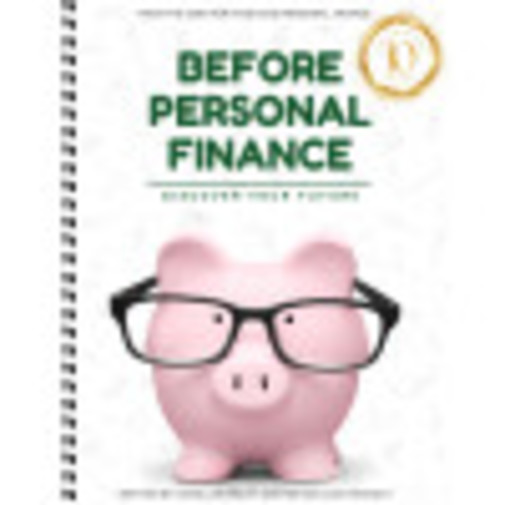We use cookies to make your experience better. To comply with the new e-Privacy directive, we need to ask for your consent to set the cookies. Learn more.
Before Personal Finance Course (print workbook)
From the creator of Beyond Personal Finance, this program was made for late elementary students ages 8-12 to introduce money concepts they will experience during their late teens and early twenties. These include issues such as smart spending, saving, investing, and borrowing. There are 10 lessons, and each will take 2 hours to complete. You may choose to do it all in one day or split it up over a week. Each lesson is divided into four parts – teaching, activity, scene, quiz. Your student will start by reading the 2-page teaching for each lesson out of the Student Workbook. After the teaching material is read, your student will complete an activity designed to extend the learning on the topic taught. Now enters the scene for each chapter. Students will be making choices for their “future you avatar” as it changes from 13 to 22. They will make choices to budget the scenario presented to them and their balance will carry into the next lesson. A plot twist wheel is spun once per lesson to reveal unexpected financial events that can occur. Each lesson ends with a comprehension quiz containing ten multiple choice questions. Answers are found on the Teacher Resources page on the website that can be accessed with the QR code or typing in the URL in the table of contents. Other resources include the spinning wheel, extra copies of the budget pages, suggested grade book, and much more.
Each lesson will also highlight one of ten different people who had influence in the finance world. Learn about Alexander Hamilton, Adam Smith, Benjamin Franklin, Janet Yellen, Warren Buffett, Johann Gutenberg, Marco Polo, Hetty Green, King Alyattes, and Ellen Alemany. Parents can share their own money management experiences with their students. The workbook ends with a list of the key terms used and their definition. Spiral-bound, 150 pages.
The heart of the program is to teach that financial maturity is the ability to weigh the pros and cons of each decision we make. Follow up this program with Beyond Personal Finance, a semester course designed for teens to teach the fundamentals of personal finance that will equip them for ages 23-42.
Designed for late elementary students, "Before Personal
Finance" introduces important money concepts such as smart spending,
saving, investing, and borrowing.
Each of the 10 lessons captures the student's imagination by asking them to
shape the future for an avatar, Future You, deciding on earning, spending,
giving, and saving. As Future You ages from 13 to 22, the student experiences
the challenges of budgeting for snacks, clothes, travel, and even a car. The
element of surprise is added as the student spins a wheel to unveil financial
twists in each lesson, creating a distinctive journey into the financial future
and providing an unforgettable experience.
150-page, full-color workbook is included. Teacher materials are provided
on the class website.
| Product Format: | Paperback |
|---|---|
| Brand: | Beyond Personal Finance |
| Author: | Charla McKinley |
| Grades: | 3-7 |
| ISBN: | 9798990190603 |
| Length in Inches: | 11 |
| Width in Inches: | 8.9375 |
| Height in Inches: | 0.75 |
| Weight in Pounds: | 1.1 |

